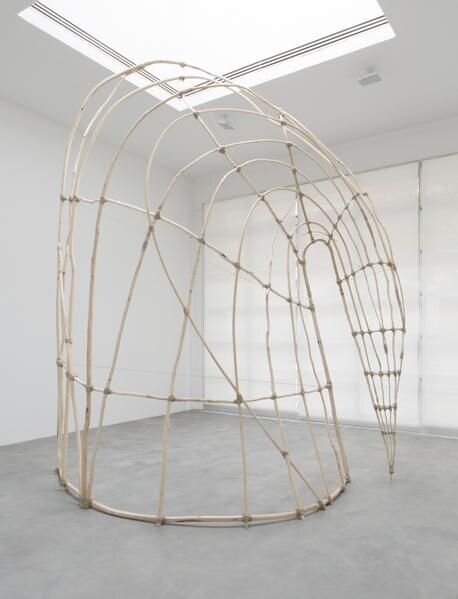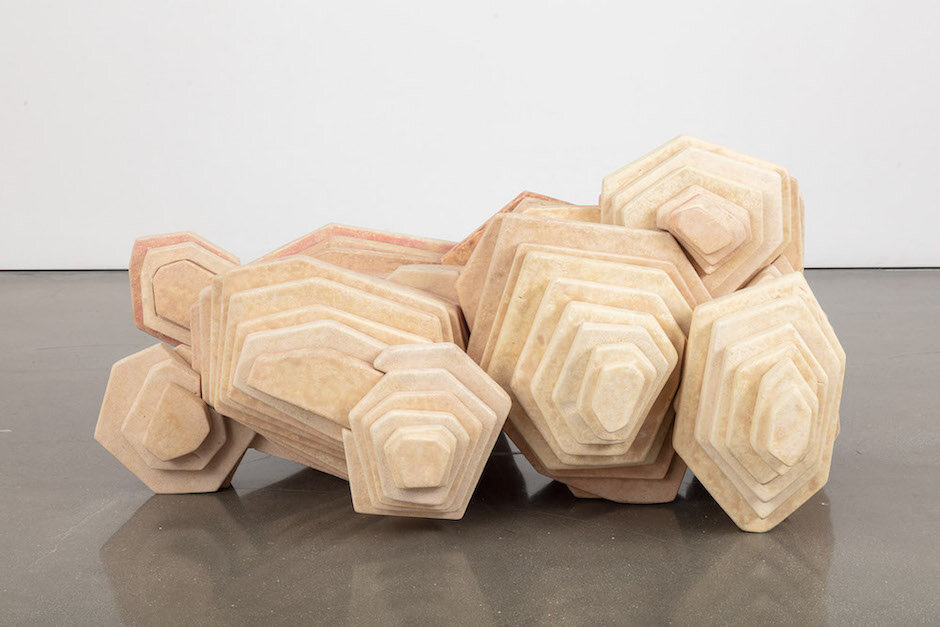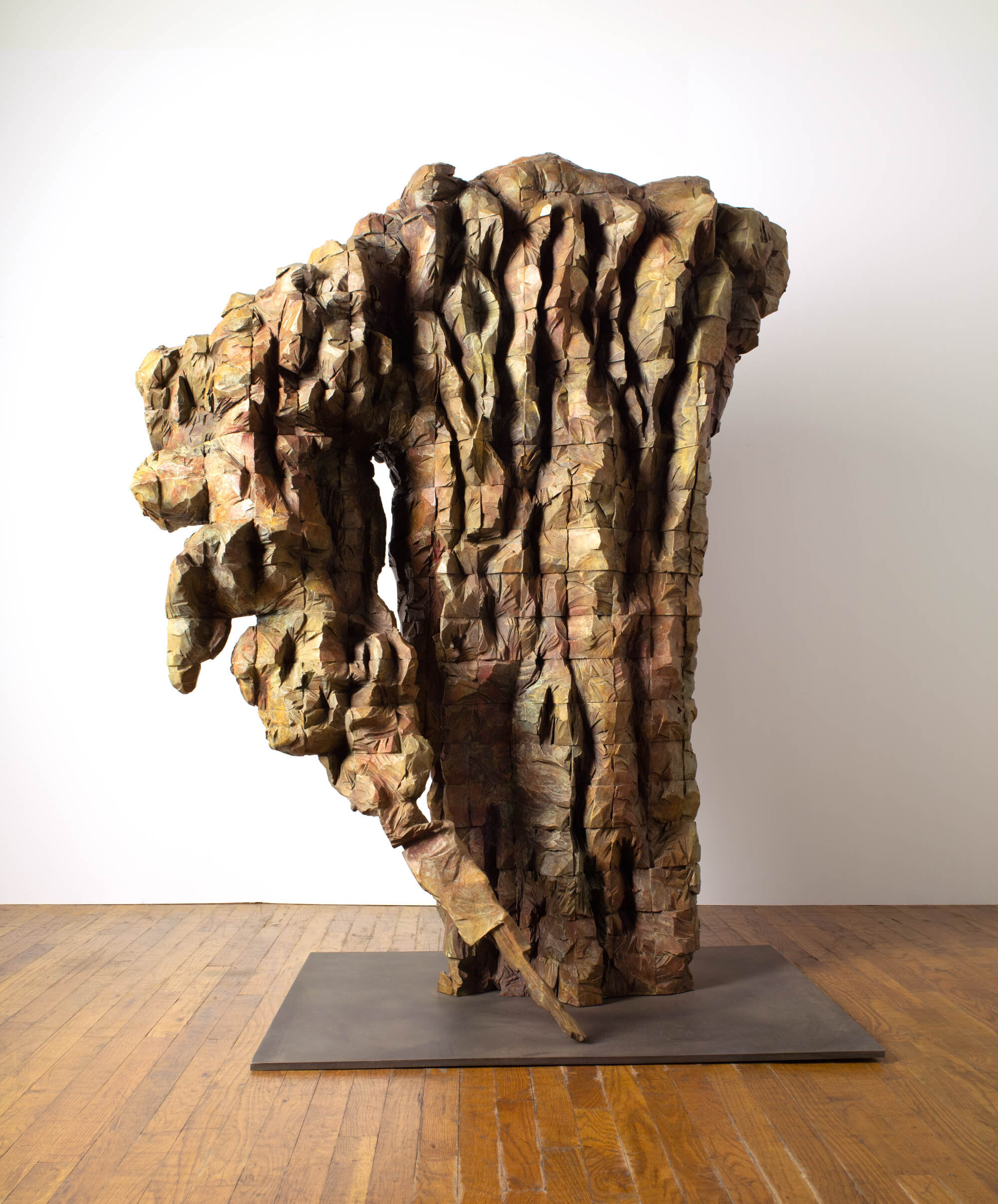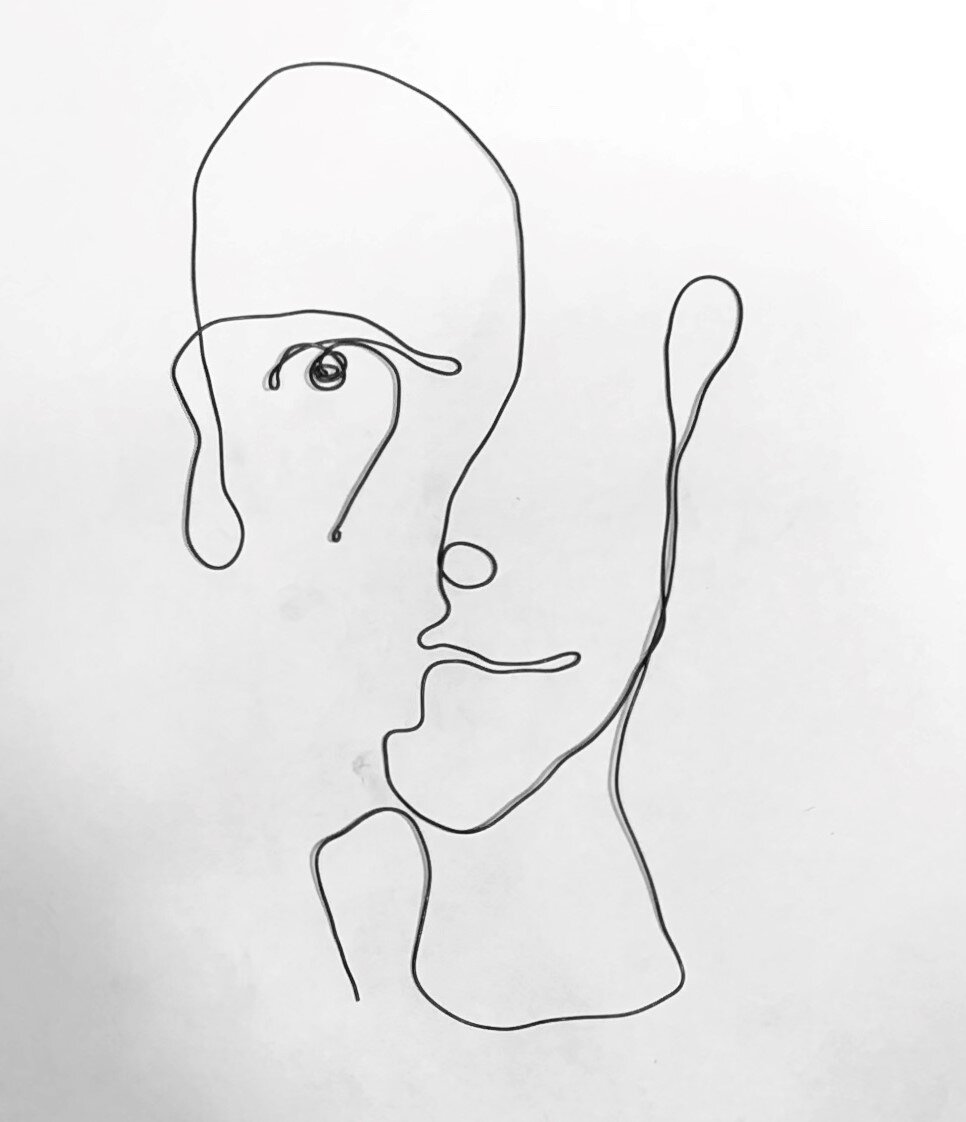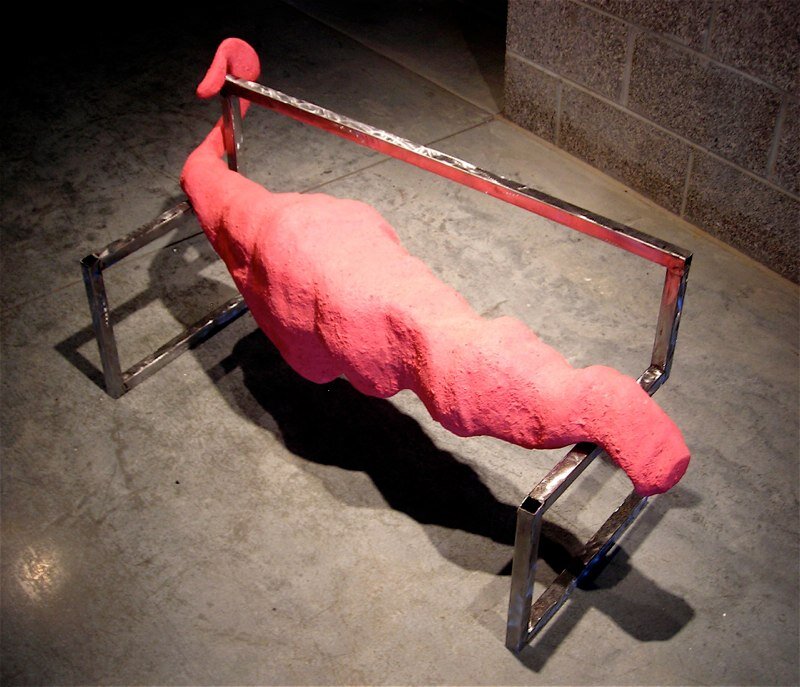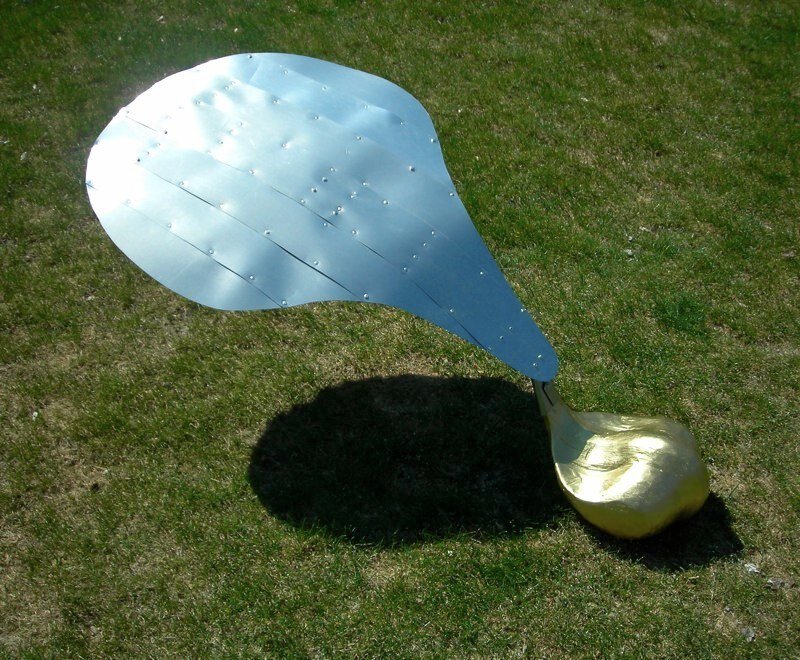
ARTS 160
Beginning Sculpture
Spring 2021
T/Th 2-3:50pm
FCVA 124
Welcome to the home page and syllabus for ARTS 160 Beginning Sculpture. Here you will find all the resources you’ll need to immerse yourself in thinking and making this semester.
This course acquaints students with a set of materials, texts, and critical discourses that articulate the historical and contemporary concerns of sculpture. Guided by formal and conceptual considerations, students generate sculptural objects and installations in a variety of media. Lectures, readings, discussions and critiques surround and foster the hands-on making process.
Office Hours: by appointment; please email me to schedule acuffm@whitman.edu
Zoom: https://whitman.zoom.us/j/2208648525
Cell: (319) 594-2173
Much has happened technologically and culturally in the course of the late 20th and early 21st centuries to alter the traditional parameters of art making. Together we will examine crucial pivots and revisions, endeavoring to understand “extra-artistic” and internal forces that shape the landscape in which contemporary sculptural gestures are made.
Artists are engaged in some of the most exciting research around--research into what it means to be alive and human right here and right now. Art, if you let it, will blow your hair back, get your heart revving, and even make your skin tingle. My teaching celebrates this through experimentation and exploration; it’s not art if there isn’t risk-taking, trial, error, revision, frustration, failure and epiphany. My classroom is dynamic space, virtual or otherwise. That said, it is a collective space, where we all benefit, support, encourage and challenge each others’ endeavors. A spirit of cooperation befits this and I exhort you to contribute to it. The quality of your presence and attention to course content is indispensable. With the addition of virtual space to our classroom, these forces of attention and commitment are critical in entirely new ways and foundational to every thing that we do.
I have conceived an overall architecture for the course, but I am also excited to tailor our investigations to our interests and needs as they evolve and present themselves. I expect you to make a serious and sustained effort to wrestle with the ideas proffered, to take notes during lectures, to come prepared to actively discuss readings or assigned videos, and to spend time at least twice during the week to further your projects between classes. It will be important to develop habits of mind that keeps you moving forward and connected to the course goals at regular intervals, rather than making binge-y, spastic, all-or-nothing gestures constrained heavily by time, i.e. “cramming” an art work into being. Within the context of pandemic related social distancing protocols, your access to the studio may inevitably feel somewhat circumscribed. Let’s try to be as flexible in our making and thinking about how to be in this space and with each other in as safe a way as possible.
Please feel free to be in contact with me as much as you need: in class, during office hours, via email. You may even text me or call my cell phone if you’re really struggling with something. Like most folks, I can get overwhelmed by email and therefore need to practice good boundaries with it, so please give me 24 hours to respond in that way. Also, I’ll expect you to check your email once every 24 hours or so, because I’ll occasionally want to communicate via this medium (about assignments, materials, etc.) and need to rely upon the certainty of your being on the other end of these electronic missives. Thank you, in advance!
Last but not least, this syllabus functions contractually, and as such delineates course objectives, expectations and obligations. You are responsible for the information herein, so please take time to read through this document carefully.
SOME THOUGHTS ON VIRTUAL LEARNING: This course, like all of my courses, is driven by relationship-centered pedagogy. That means we will privilege the relationships we have with each other, strive to make connections between course content, materials and larger intellectual themes, and consider the virtual space as just one of many materials we can intentionally sculpt during our time together. We are doing this under very unusual and often stressful circumstances. I sincerely commit to honoring the strangeness of this time with all of its possibilities, limitations and unknowns.
GOALS AND OBJECTIVES:
- Develop 3-D visual thinking and making skills. The hand knows things that the mind does not!
- Understand the techniques and processes related to individual media. Get into a complicated relationship with matter!
- Hone your ability to assess and interpret 3-D forms, conceptually and formally. Cultivate intuitive, irrational, emotional, embodied intelligence!
- Develop an aesthetic vocabulary informed by the Visual Elements and Principles of Design. Yup.
- Become acquainted with the critical discourses that articulate the historical and contemporary concerns of sculpture. Indeed.
- Take creative risks, experiment, fail, succeed, and repeat. Exactly!
- Think divergently. Make radically. Let’s do this!!!
EVALUATION: In this course I value process equal to product. I will look at (and thus grade) the process and the product in all the work you produce throughout the semester; this includes actual projects and material studies made in the brainstorming stages. A lot of this will be less visible to me through the online format, still, let’s struggle together to make this manifest.
Process (everything that leads up to a work) = 50% of grade
Process is paramount in artmaking. Dedicated development of your ideas, exploration of a variety of options, and patient consideration will yield the most extraordinary results. By “process,” I mean the development of your ideas in sketches, maquettes and in concept. As a general rule, persistence and deep attention offer ample pay-off. At other times, you will need to submit to the irrational forces of intuition and madness, heeding the unique screech of sirens and muses.
Product (design, craft, imagination manifest in the final piece) = 50% of grade
The formal choices that you make about size, scale, shape, color, material, etc. ARE the content of your work. Close attention to the Visual Elements and Principles of Design will yield the greatest synthesis between FORM and CONTENT. By “product” I mean the final work, its formal success and achieved meanings as delineated by the assignments, and in conversation with the fundamental concerns of sculpture, historical and contemporary.
The relationship you build with sculptural materials generates the knowledge and skill that allow you to transform raw matter into sculpture. Craft is both the physical and intellectual skill you bring to the work.
Many aspects of art cannot be taught. That said, we will work to tap into places of intuition, creativity and mystery that fuel great human achievements, which sometimes take the form of art. Mostly, making art is simply a way of thinking—a way to construct knowledge from experience.
I’m as interested in thinking as I am in making and particularly in the intersections between the two. (Ultimately, they are not distinct!) In light of this, I will grade you on your ability to articulate ideas in both materials and words. In addition to presenting a variety of physical/creative problems to solve, course content will include discussion of influential technological, social and cultural forces that have impacted artists and art making over the last 100 years. Your work AND the discussion of said work should evidence engagement with these ideas.
All assigned activities must be completed in order to pass this course. Activities completed with high degrees of attention, persistence, passion, and creativity will warrant high marks.
GRADES: I keep a running log of your performance in this class re: participation, attendance, process and product. I will also give you in-person feedback at mid-semester at which time we will schedule a one-on-one meeting to discuss your progress in the course and to answer any questions you might have.
Project #1 - 20 pts.
Project #2 - 20 pts.
Project #3 - 20 pts.
Project #4 (the floating project) - 20 pts.
Citizenship - 20 pts.
OFFICE HOURS: I’m available to you during our class time and at other times through the week when you may need assistance with course content/assignments; just email me if you’d like to meet outside of our regular time slot. We can chat about the course, college more generally, life, careers, current events or whatever. Do not feel like you need a so-called “good” question – you can even just say “hello”!
CLASSROOM CITIZENSHIP: I use the term Citizenship normally to indicate your performance in the studios with regard to participation, work ethic, cleanup, organization, and safety, in addition to a measure of the quality of your engagement with the meat and bones of this course’s intellectual content. In an online setting your attentiveness to the larger learning environment/culture and collective intelligence that we generate (or thwart) together takes on a totally new dimension. Sculpture still requires a particular kind of mindfulness, presence, and an ability to execute from places of intuition/embodied intelligence. We will cultivate these throughout our time together.
THOUGHTS ON POWER, REPRESENTATION AND HISTORY: I believe art and artists are indispensable to a well-functioning democracy. Democracy requires imagination and flourishes when the imaginative life of a society is cultivated and nurtured. We can only create that which we can imagine, whether our creations are works of art, engineering, public policy, etc. I therefore strive to maintain a classroom that is deeply respectful of differences in ideas, opinions, strategies, and experience. Yet the history of art is affected by the same historical operations of power that play out in the world at large. Cognizance of the ways race, class, gender, sex, ethnicity, religion, age, ability, national origin, and sexual orientation inform our making and interpreting is crucial to our intellectual inquiry. I seek to know and carefully navigate the ways artistic representation makes power and privilege visible. This can be tricky, but again, I endeavor to build a community in which we ask hard questions about how the history of images and objects shapes our experiences, desires and sense of the possible. Building this awareness will assist the effort to decolonize the curriculum.
I would be remiss to fail to acknowledge that the forces of empire in their different guises (genocide, slavery, white supremacy and misogyny) have conspired to allow us to inhabit this room on this campus on this land. I do so with the hope that consciousness of these agents can lead us away from their perpetuation.
CRITIQUES: Critique is a format for discussing work in a more or less public way. Critiques can take many forms, including group-wide scenarios, peer/partner critiques and written reviews. Often they utilize free-association, but they function best when the criteria for analyses are clear. You will be on both ends of the critique, giving and receiving feedback. At the most basic level our interest will be in learning how visual language functions, and how to wield it for certain effect. All artworks make arguments and utilize visual rhetoric to do so. But art also traffics in language that is purposefully ambiguous, historically situated and slippery. Meaning functions in ways that are often not rational or literal but instead oblique, associative and evocative. Interpretation happens best at the deep end of the pool and we will spend a good amount of time there.
LATE WORK: Projects unfinished by the designated time are extremely discouraged and will--excepting rare cases of serious personal crisis, famine, war, acts of God and/or economic collapse--suffer commensurate reduction in grade. I advise you to communicate with me asap if you anticipate not being able to complete an assignment on time.
ATTENDANCE/TARDINESS: Prompt and consistent attendance is crucial and your success in this class will depend largely upon it. I take attendance daily and the quality and quantity of your attendance will be reflected in your Classroom Citizenship grade. I always require an email from the Dean of Students in order for an absence to be considered Excused. Often, at the beginning of class I make important announcements and set up the schedule of activities, answer questions, or reflect on our direction and progress. Routinely missing the first 5-10 minutes is unacceptable and will severely impact your Classroom Citizenship grade.
WORKLOAD: A modicum of success in this class will typically require 5-6 hours of work outside of class time per week; this includes working on class projects, readings/videos, etc.
Art making is not a linear process, and artworks cannot be crammed overnight; this dictum applies especially to material based works, which are supremely subject to laws of physics, skill and the functions of time and space.
CLASS STRUCTURE: Our time together will be structured by studio time, short video lectures, group and individual Zoom interactions, critiques, and thinking through/together: writing and discussing art, artists and ideas.
INSTAGRAM: whitmanbeginningsculpture2020
COURSE FEE: $150
SAFETY: Works involving bio-hazardous materials, body fluids, egregious physical or emotional pain, or weapons will NOT be permitted in class. If you have ANY concerns regarding the safety of a material or process or project, you are required to consult beforehand with me. Let your guiding principle be to “do no harm,” physically to the building, yourself, grounds, facilities, etc. or emotionally to yourself/others. While some actions may be intellectually defensible within the history of art, there are limits to what I will allow to happen in my classroom, virtual or otherwise, for both your and my emotional and physical safety.
CHANGE: I reserve the right to alter or modify this syllabus as we proceed through the weeks of the semester.
ACCOMMODATIONS: If you are a student with a disability who will need accommodations in this course, please meet with Julia Dunn, Associate Dean of Students (Mem. 205, X5213, dunnjl@whitman.edu) for assistance in developing a plan to address your academic needs. All information about disabilities is considered private; if I receive notification from Ms. Dunn that you are eligible to receive an accommodation, I will provide it in as discrete a manner as possible.
Janine Antoni
Martin Puryear
Antony Gormley
Martin Puryear
Leonard Drew
Martin Puryear
Liz Larner
Ursula Von Rydingsvard
Liz Larner
Liz Larner
Thomas Houseago
David Altmejd
David Altmejd
David Altmedj
Thomas Houseago
Urs Fischer
Ursula Von Rydingsvard
Martin Puryear
Project #1 Lyrical Line
Line is a foundational visual element; all shapes can be reduced to linear structure. Line can have any character you put into it: winsome, playful, agitated, chaotic. In a series of works you will develop your capacity to generate emotion and form with expressive, line-based power.
3 studies in wire
1 larger study in welded steel
Artists:
Liz Larner
Diana Al-Hadid
Project # 2 Shape Shifting
Moldmaking is one of the foundational techniques in traditional sculpture, allowing you to make copies and/or multiples of objects. They can also serve more than functional ends, and may possess intrinsic visual power of their own. Understanding how molds function will also teach you how to isolate and attend to shapes themselves, another bedrock element of sculpture.
Artists:
Janine Antoni
David Altmejd
Project # 3 Mass + Volume
There are lots of ways to generate mass and volume— in this project you will study the ways this can be achieved in wood. First, you will explore the process of assemblage, building larger masses from an accumulation of smaller pieces, glued and dowelled together. Second, you will generate more open, ballooning forms that cantilever and contain.
Artists:
Martin Puryear
Ursula von Rydingsvard
Project #4 (The Floating Project)
This project will involve thin pieces of pine that you can dowel together into whatever you imagine. You can work with these materials outside the sculpture studio and during special times within the critique gallery. It is a project that floats in the space between the other projects, like a ghost.
Week 1
Tuesday, January 26, 2021
WATCH: course intro video and Art 21 video on David Altmejd
THINK ABOUT THE FOLLOWING QUESTIONS and be prepared to share your ideas in our zoom class Thursday:
David Altmejd doesn’t “do sketches,” preferring to work directly in materials; can you imagine what your own approach might be, and what might be some of the benefits and/or drawbacks of developing sketches or models?
Altmejd states that he’s not so much interested in learning a language but rather in “inventing languages,” which he feels he is able to do in art. What do you think he means?
Altmejd vehemently disses thinking about work as a “mere illustration” and says he’s specifically going for the development of “complexity, layers, references and energy in the work” so that it comes alive and “develops the capacity to generate its own meaning.” What word would you put in opposition to “illustration” when trying to describe what artworks do that goes beyond illustration?
What does Altmejd mean when he says, “the sculpture says things I never thought”?
Check out some of his artwork here.
Thursday, January 28, 2021
12 noon- 1pm Zoom: https://whitman.zoom.us/j/2208648525
We’ll discuss the David Altmejd video and I’ll give and assignment to do over the weekend called Object Translations:
In order to do this assignment please pick up a small bag from outside the Sculpture classroom with your name on it.
You will need a partner for this exercise. It can be anyone within your pandemic circle. Within the small black bags you will find two objects. DON’T LOOK INSIDE THE BAG! That will come later.
Find a place to sit with your partner. Have one of the bags there, along with one chunk of the plastic clay.
One person (A) puts their hands in the bag and feels for the object therein. The other will sit with the clay (B).
A’s job is to give a verbal description of the object, WITHOUT revealing its identity. B’s job is to sculpt a likeness of the object, based on the verbal cues.
You should spend about 10 minutes doing this activity. Try to be as accurate as possible!!! Reflect on what strategies you use to communicate with your partner about your object. After 10 minutes have elapsed, you may reveal the object inside the bag and place the objects side by side.
Please take a photo of both the object and its inspiration, and post it to our Instagram account.
Week 2
Tuesday, February 2, 2021
In-person, demos and instruction.
Thursday, February 4, 2021
In-person, demos and instruction.
Week 3
Tuesday, February 9, 2021
WORK DAY
Thursday, February 11, 2021
WORK DAY
Week 4
Tuesday, February 16, 2021
WORK DAY
Thursday, February 18, 2021
POWER & PRIVILEGE SYMPOSIUM
WORK DAY (studio may be open, TBD)
Week 5
Tuesday, February 23, 2021
WORK DAY -
Thursday, February 25, 2021
WORK DAY -
Week 6
Tuesday, March 2, 2021
FIRST PROJECTS DUE - Documentation + Critiques
WORK DAY, demos and instruction
Thursday, March 4, 2021
WORK DAY, demos and instruction
Week 7
Tuesday, March 9, 2021
SPRING BREAK
Thursday, March 11, 2021
WORK DAY, demos and instruction
Week 8
Tuesday, March 16, 2021
WORK DAY
Thursday, March 18, 2021
WORK DAY
Week 9
Tuesday, March 23, 2021
SPRING BREAK - NO CLASS!!!!!!!
(SECOND PROJECTS DUE - Documentation + Critiques )
Thursday, March 25, 2021
SECOND PROJECTS DUE - Documentation + Critiques
Week 10
Tuesday, March 30, 2021
WORK DAY, demos and instruction
Thursday, April 1, 2021
WORK DAY, demos and instruction
Week 11
Tuesday, April 6, 2021
WORK DAY
Thursday, April 8, 2021
WORK DAY
Week 12
Tuesday, April 13, 2021
UNDERGRADUATE CONFERENCE — NO CLASS!!!!!!!
Studio may be open. TBD
Thursday, April 15, 2021
WORK DAY
Week 13
Tuesday, April 20, 2021
WORK DAY
Thursday, April 22, 2021
SPRING BREAK - NO CLASS!!!!!!!
Week 14
Tuesday, April 27, 2021
WORK DAY
Thursday, April 29, 2021
WORK DAY
Week 15
Tuesday, May 4, 2021
THIRD PROJECTS DUE - Documentation + Critique
Thursday, May 6, 2021
THIRD PROJECTS DUE - Documentation + Critique
LAST DAY OF CLASS
Made with Squarespace
ARTS 314 Art and the Anthropocene



